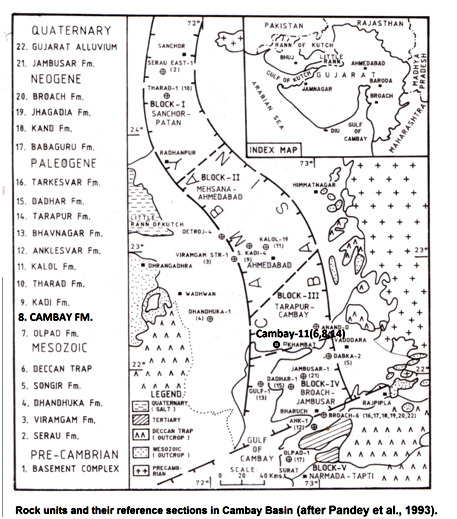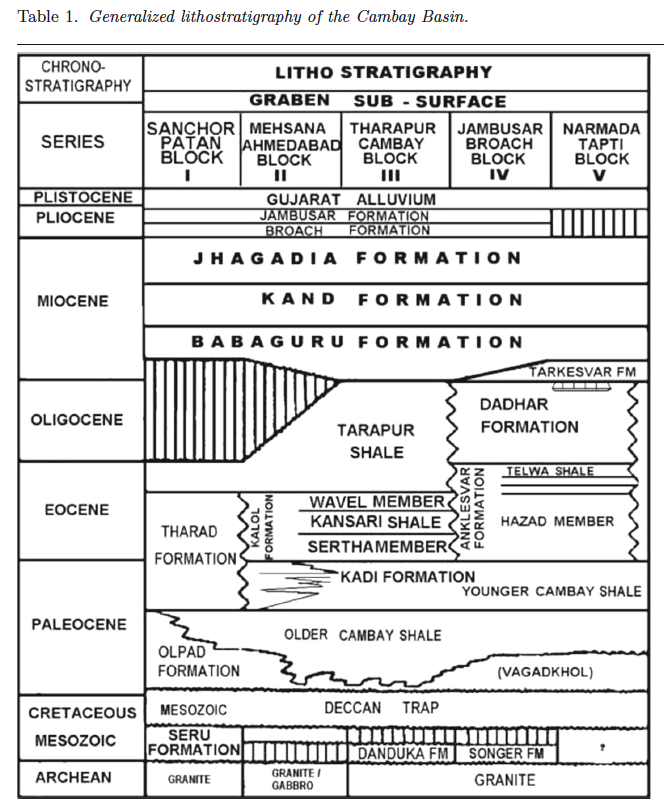Cambay Fm
Type Locality and Naming
SUBSURFACE: Well Cambay-11, (depth interval 1950-2382 m). It is of 432 m thickness. [Original Publication: Zobov, I.P., Nagolny, I.K., Zapivalov, N.P. and Chandra, P.K. (1966) Problem of correlation and distribution of hydrocarbon bearing horizons in the Eocene of Cambay Basin, ONGC Bull, vol 3 (2), pp. 9-13.]. Reference well: Sobhasan – 24 (depth interval 1191 – 2062 m), its thickness is of 871 m.
Synonyms: Younger Cambay Shale
Lithology and Thickness
Claystone. In the type section, this formation is comprised of dark grey to black, fissile, frequently laminated and bituminous shale with occasional bands of sands and siltstones.
[Figure 1: Rock units and their reference sections in Cambay Basin (after Pandey et al., 1993)]
[Figure 2: Generalized stratigraphy of the Cambay Basin. (from Jaiswal and Bhattacharya, 2018, J.EarthSyst.Sci., 127:65)]
Relationships and Distribution
Lower contact
The formation has unconformable relation with the overlying Kalol Fm in the north and the Anklesvar Fm in the south.
Upper contact
It has conformable, gradational and intertonguing contact with the underlying Olpad Fm.
Regional extent
GeoJSON
Fossils
The Cambay Formation, in general, is poorly fossiliferous. Important foraminifera recorded from upper part of the Cambay Formation include: Nummulites burdigalensis, Operculinoides sp., and rare occurrences of Assilina granulose and Assiline cf. A. spira and ostracodes i.e. Alocopocythere longilinea, A. anbstracta, Gyrocythere grandilavis, Butonia bokdi, Paracypris sp., and Neocyporideis suratensis, Phylcetenophora meridionalis and Acanthocythereis vastanensis. The younger Cambay Shale (in the above section, it is mentioned that ‘shale’ is discarded fo ‘Formation’) is rich in nonmarine Ostracodes. They include Canada cambayensis. Cythereidella gujaratensis, Cythereidella govindanii, Theriosynoeum? Danielopoli, Grambocythere colinii and Metacypris bhatiai. Kumar (1993) reported Globorotalia sp., Chiloguembelina sp., arenaceous foraminifera from the upper part of the formation.
Age
Depositional setting
Additional Information

